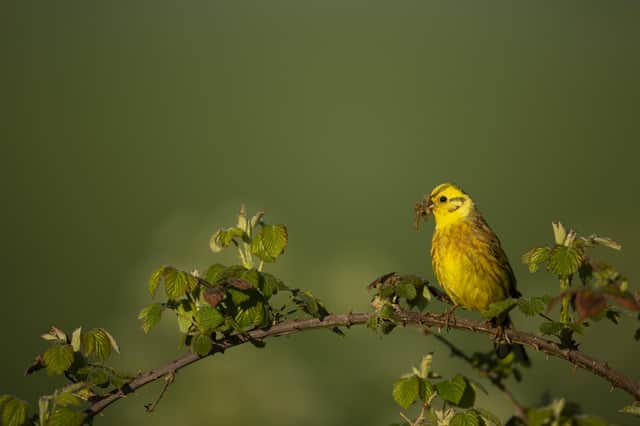RSPB NI: Hedgerows are nature’s haven


As I have been travelling about, I have been admiring the hedgerows, seeing the last of the summer swallows bursting out as I pass, the deepening hues of the leaves, and starting to get a sense of autumn fruitfulness as blackberries give flashes of colour.
Well maintained, native hedgerows are vital for nature and wildlife to thrive in our countryside, providing shelter and food, and forming corridors between habitats along which wildlife can disperse.
Advertisement
Hide AdAdvertisement
Hide AdSadly, for many years they have been removed faster than they can be replaced, meaning birds and other wildlife who shelter and nest in their woody bases, or forage for their berries, are missing out on a vital part of the ecosystem for their survival.
We are working to turn that around, developing relationships with farmers to help establish new and improved hedgerows throughout the countryside.
And it is not just farmland hedges that can be useful to nature, a garden hedge can also be a flourishing home for wildlife as well as an excellent natural shelter while shielding your garden from the wind.
There are a few simple steps you can take to make your hedge at home more nature friendly.
Advertisement
Hide AdAdvertisement
Hide AdFor example, if you are planting new hedge, consider native trees and shrubs such as hawthorn, beech, hazel or holly. If you already have a hedge why not add more species such as, clematis or wild honeysuckle, or grow a variety of plants along the hedge bottom, like dog’s violet, garlic mustard and hedge woundwort, to help it become a wildlife haven.
You can trim your hedge once a year, preferably in winter, being careful to avoid the nesting season.
Try and maintain an A shape, broad at the base as this allows light to travel through the foliage to the base to help it thicken. Don’t tidy up too much – leave leaf litter and seed heads to attract not just birds, but also hedgehogs, small mammals and a wide variety of insects.
If you want to find out more about how to create a more wildlife friendly garden or greenspace, visit rspb.org.uk/ni.
Comment Guidelines
National World encourages reader discussion on our stories. User feedback, insights and back-and-forth exchanges add a rich layer of context to reporting. Please review our Community Guidelines before commenting.